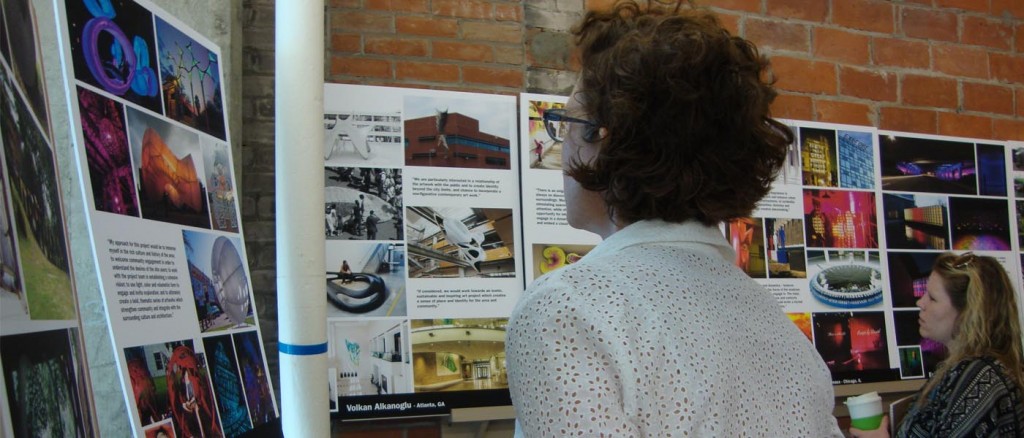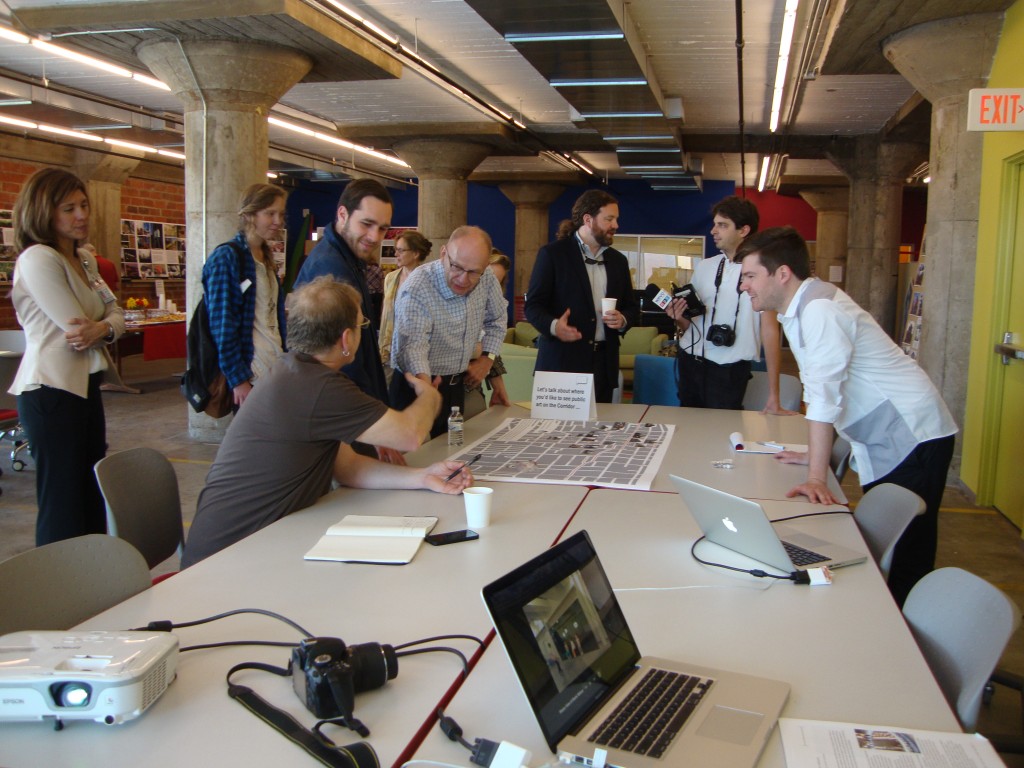Public art prompts debate. And it should. Thanks to so many great folks with strong opinions who came to our public meeting this week and shared very diverse feedback.
“I like to pretend that my art has nothing to do with me,” said Roy Lichtenstein. But in truth, when it comes to art, it’s always personal. So here is a sampling of the dichotomy of viewpoints expressed at the meeting this week. These responses will be shared with the jury who will be interviewing the semi-finalists on May 19 and 20.
From questions asked at the community meeting:
Where should art go?
- Find hidden spots where you can turn the corner and discover it
- In big visible public spaces, gateways and prominent places along the Corridor
What kind of art? Traditional vs. abstract?
- Abstract work is interesting, exciting and innovative; I love abstract art
- Abstract work has little reference to place and doesn’t relate to the city; I hate abstract art
- Pick something conservative and safe; don’t provoke
- Don’t be safe; pick something significant to put Syracuse on the map
- Pick something traditional, using historical imagery, that conveys our heritage and legacy
- Don’t be caught in the past; pick something innovative, playful and interactive, with immersive interactive media – something that says this is the future of public art for the next generation
- Pick works that complement the existing architecture
- Pick works that contrast with the urban environment
- Pick works that say Syracuse
- Pick works that set Syracuse apart
- Provide access to Syracuse’s history to the artists but don’t impose it upon the art
- Pick cutting-edge works that define Syracuse’s future
- Pick works that tie together the lighting themes that are emerging downtown; Syracuse is becoming known for its innovative work around lighting
- Don’t pick lighting projects; they are trendy; pick projects that use post-industrial matierals that speak to Syracuse’s rust-belt legacy
Local vs. national?
- Some local artists are disappointed that there wasn’t a special set-aside amount just for local artists; some felt that 50% of the call should have been set aside just for local artists
- Others disagreed and said that this was a carefully designed open competition with very transparent RFQ criteria, designed to be a fair process giving all artists equal opportunity through a professional jury
- Local vs. national is a natural tension that arises in all open art calls; there are ways to collaboratively engage both communities in the creative process; pick artists who want that kind of engagement
- This is a great chance to introduce Syracuse to the national arts community, and still keep it local by teaming with local resource providers (fabricators, maker places, art supply sources, mills and lumber yards, recycled materials); it would be interesting to create mini-residencies for national artists to live and work with local artists, and do workshops at makerspaces – make it an immersive process.
- The Connective Corridor and the Near Westside Initiative have been the biggest funders to date of local public art. This is an opportunity to continue a conversation about ways in which the broader community can support local artists and raise funds for more local public art calls.
- Invite national artists to be part of a public art summit – use it as a way to restart a conversation about funding public art. It would be great to raise $50,000 a year for public art and have an annual city-wide local public art call. Use this process as a way to show we are a collaborative creative community and that public art is important.
- Use this as a way to jumpstart a conversation about integrating public art into the I-81 project
- Encourage the city to think about a gateway public art program – how can good public art make an important first impression?
- As we redevelop the urban landscape, think about how art works within the architectural language of the city? How does it relate, augment and speak to the vernacular of the city? As part of that, develop an architectural language for new buildings that includes an aesthetic tone and design scheme that works for the long haul.
- Use this as a way for developers and the private sector to get on board supporting public art. Send a positive message that public art is a vital part of the community – especially as Syracuse is moving more to a European model that is walkable.
- Syracuse is at a critical place in its juncture, with so many pieces coming together; dynamic, significant public art and lighting projects will attract young people to come here and want to be part of the creative community; we need to create an environment that attracts national artists and also nurtures local artists
- Syracuse can position itself as the place where artists can come and thrive; to do that, we need a creative mix of global and local.
How can art engage?
- It should break down barriers and make connections; it should get people talking
- Art should provoke and that’s why it’s art; public art isn’t the result of public opinion polls
- Getting people interested in public art is the biggest challenge in Syracuse; how do you get people to care about it?
- I’m very excited about this project and hope it engages a variety of populations; it’s one of the more exciting opportunities to come along and put Syracuse on the national scene for art
And in general:
- These are awesome; I love some of these
- These are awful; I hate some of these
- Art is harmony or revolution, or some of both
- Count on art to get agreeable people disagreeing
In the end, we like this perspective: “Public art is not about finding artists or works that distill the perfect average of public opinion. It is about encouraging sincere debate about art. If people are talking about it in passionate ways, that is arguably as important as commissioning one public work people walk by every day and rarely consider.”
There is a gentle art to seeking public opinion. We’re happy to be exercising it with this public art call.
Tell us what you think.
Read more about the Connective Corridor Public Art process, the artists and jury – CLICK HERE



